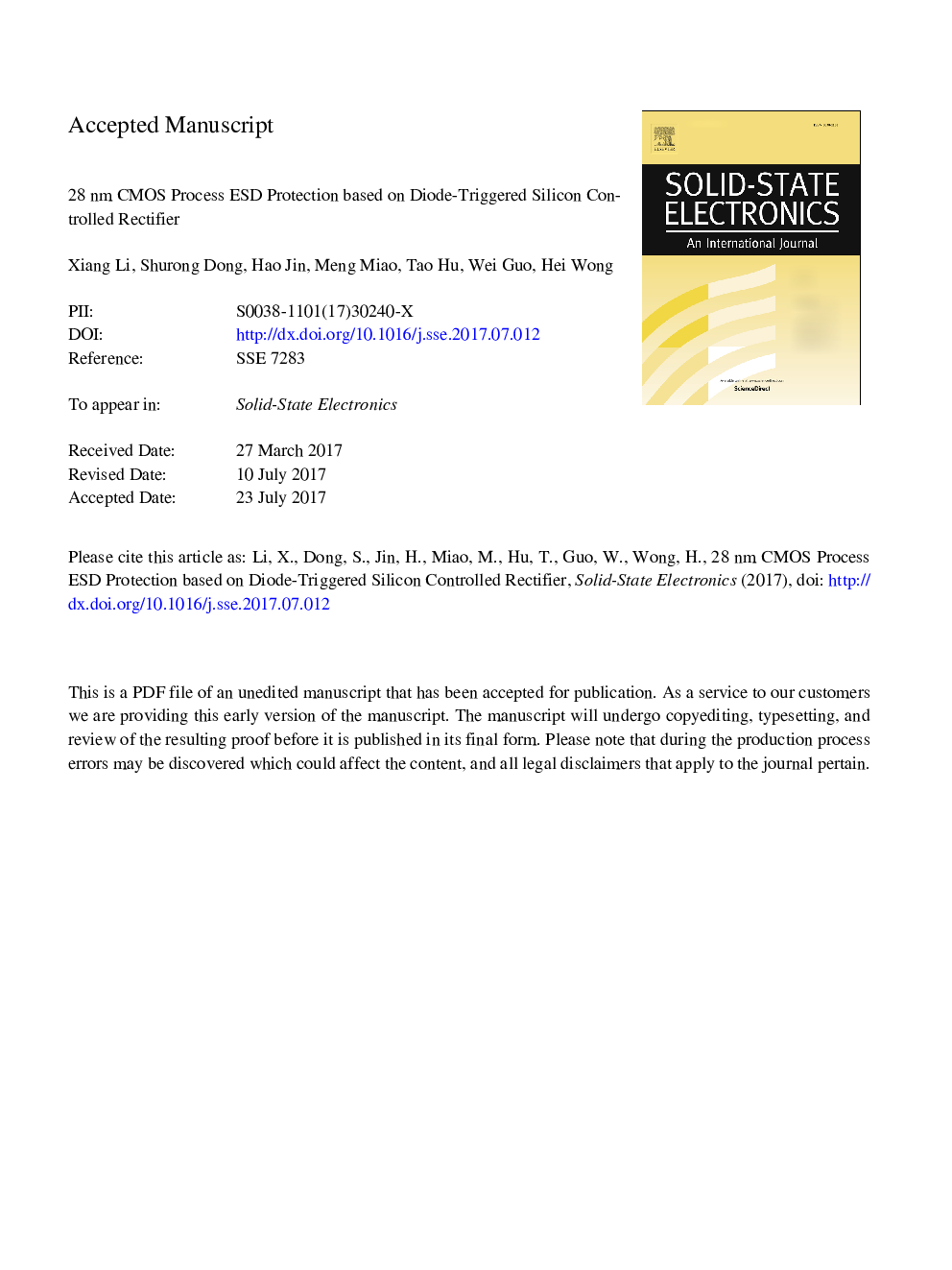| Article ID | Journal | Published Year | Pages | File Type |
|---|---|---|---|---|
| 5010199 | Solid-State Electronics | 2017 | 9 Pages |
Abstract
The downsizing of CMOS technology into the decananometer range has called for the redesign of the ESD protection devices because of the constraints of lower operation voltage and smaller breakdown voltage of the ultrathin gate oxide. In this work, we had developed a two-dimensional diode-triggered silicon-controlled rectifier (TD-DTSCR) structure to cope with the narrowed ESD design window in the 28 nm CMOS technology. A sufficient large SCR trigger voltage was obtained by directing the triggering current to both longitude and lateral directions, through two parasitic diodes and the P-Well, so as to save the chip area for realization. Optimization was done by varying several device parameters and the best ESD robustness obtained was 53.7 mA/μm which was about 65% larger than that of a simple SCR with the same width of 30 μm and realized using the same technology. Failure analysis was also conducted to identify the possible weak spots of the proposed structure.
Keywords
Related Topics
Physical Sciences and Engineering
Engineering
Electrical and Electronic Engineering
Authors
Xiang Li, Shurong Dong, Hao Jin, Meng Miao, Tao Hu, Wei Guo, Hei Wong,
